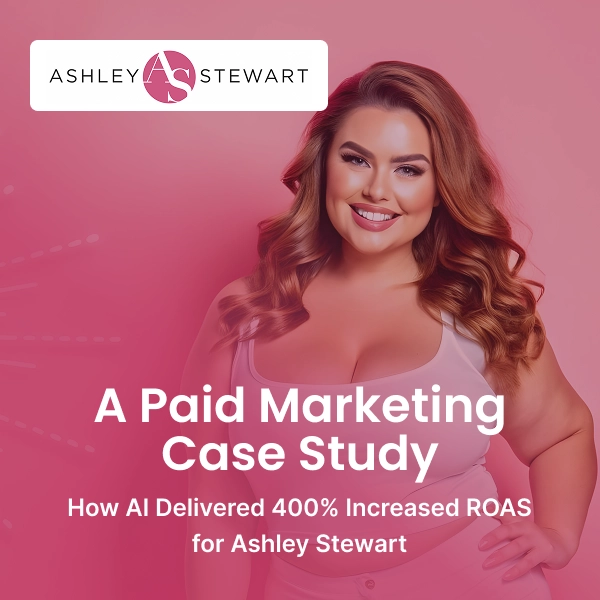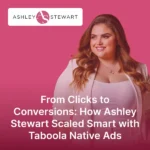How AI Delivered 400% Increased ROAS for Ashley Stewart: A Paid Marketing Case Study
Ashley Stewart has always been synonymous with classy and confident plus-size fashion for US women. A strong brand identity, an intensely loyal customer base, and a reputation for being fashion-forward have made sure that customers keep returning to the brand. It was our honor to have such a reputable brand reach out to us, and we were ready to help in any way we could.
The Challenges
Despite investing substantially, Ashley Stewart’s campaigns were not generating enough sales to offset their ever-increasing costs.

Creative Roadblocks
Frequent ad disapprovals—especially for lingerie creatives—hindered continuity and performance.

Missing AI Integration
Underutilizing Google’s automation and AI capabilities to drive performance.
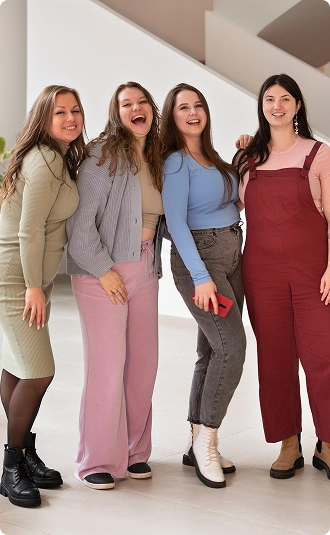

Rising Ad Spend, Declining Returns
Despite strong recall, online ad campaigns were underperforming, delivering low sales for high investments.

Lack of Campaign Structure
Disorganized ad accounts and unrefined audience targeting made it difficult to scale.
Understanding the Assignment
The first step to solving a problem is to diagnose it properly- and that’s where we started, too. On closer look, we found that the brand’s campaigns had a few blind spots.

Lack of Campaign Structure
Naming of campaigns was inconsistent, and there was no unified strategy at play. Hence, tracking performance and optimizing the campaigns was extremely difficult.

Poor Targeting Accuracy
The campaigns were not built around precise audience signals. As a result, ads reached broad, unqualified users, resulting in higher costs and fewer conversions.

Creative Fatigue
Ads got flagged frequently, and there was a slim selection of creatives to recycle through. So, the campaigns couldn’t adapt or sustain momentum over time.
Our Step-by-Step Strategy
Once we uncovered these gaps, we got to work building an AI-led system. The entire campaign ecosystem needed restructuring, and we were on it.
Revamped Performance Max with Enriched Signals
Rather than using PMax as-is, we added layers of behavioral insights, in-market interests, and purchase data. This empowered Google’s AI to locate high-value users across multiple touchpoints—from Search and Shopping to YouTube.
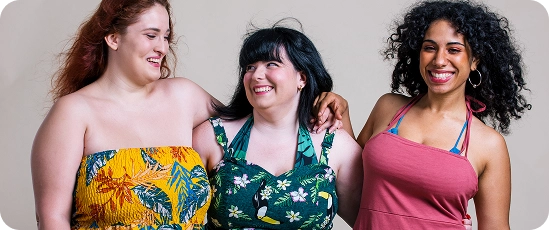
Scaled with Broad Match + Smart Bidding
We captured more long-tail, high-intent queries, boosting conversion efficiency while reducing manual guesswork.
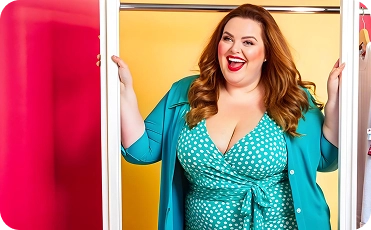
Ensured Creative Compliance with AI
We used AI insights to identify which elements in lingerie ads triggered disapprovals. Based on these signals, we redesigned creatives (e.g., stylized product shots without human models) to stay compliant without losing appeal..
Built an Always-On Creative Refresh Loop
We regularly replaced underperforming assets to keep engagement high and performance steady throughout the campaign lifecycle.
Boosted CTR with Smarter Ad Extensions
We implemented AI-recommended sitelinks and CTAs. This increased click-through rates, improved Ad Quality Scores, and brought acquisition costs down.
The Results
Ashley Stewart’s campaigns performed phenomenally on back of the new AI-powered ad strategy. Here’s what we achieved:

400% Increase in ROAS
Smart targeting and AI-optimized campaigns saw ROAS shoot up.

$2.94 Drop in Cost Per Conversion
Eliminated inefficiencies and improved alignment between message and audience.

13,800+ Additional Purchase Events
High-intent traffic turned into real, repeatable transactions.

$1.16M Boost in Total Purchase Value
More volume and higher-value purchases contributed to significant revenue growth.

Conclusion
By deploying AI smartly, we could reconfigure their digital marketing ecosystem. Our magic mix included technical precision, efficient automation and human creativity.
When you give AI the right data, creatives, and structure—it delivers. Ashley Stewart didn’t just recover—they set a benchmark for what’s possible.
Conclusion

